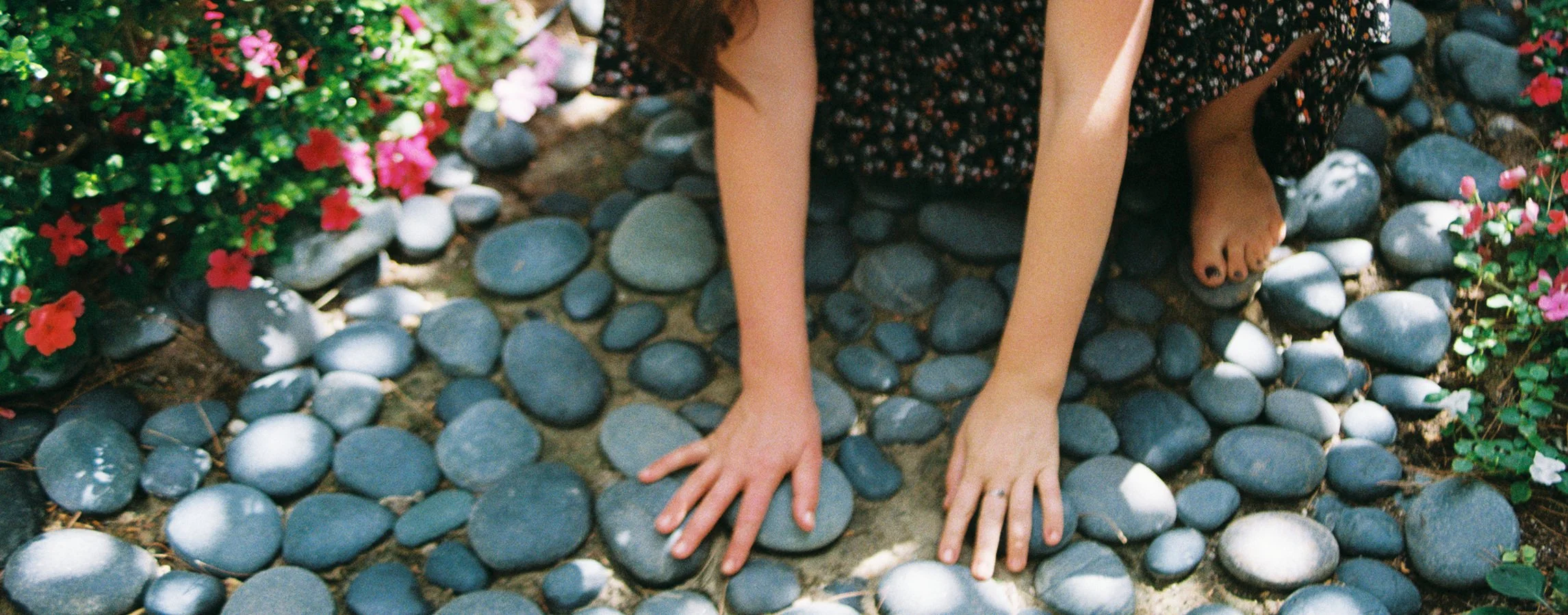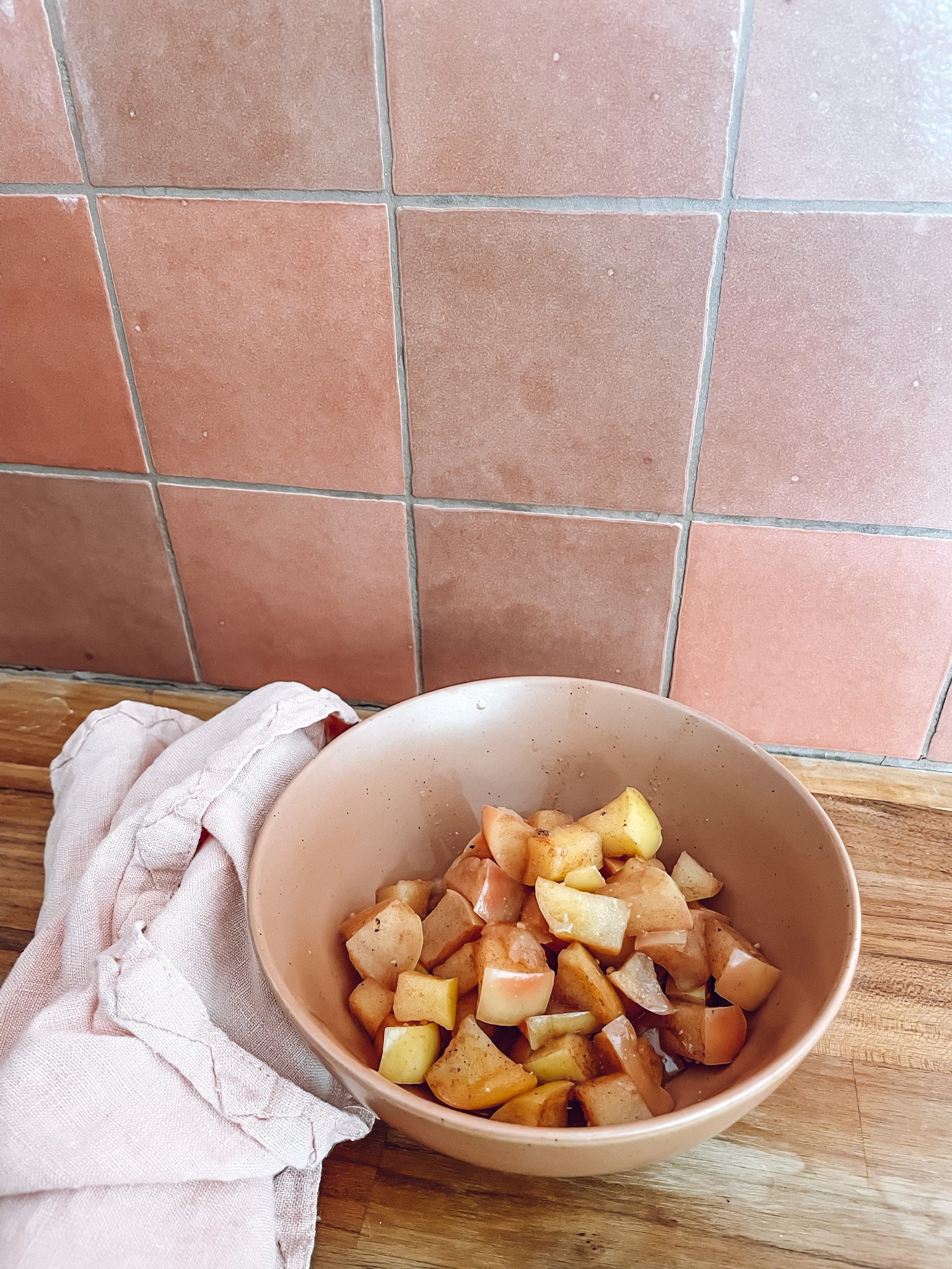Ayurveda & The Doshas
Ayurveda is a medical science developed through meditation and through the observation of the micro and macro expression of the five elements — Ether (space), Air, Fire, Water and Earth. Sanskrit for “the science of longevity,” Ayurveda is a full-spectrum system of healing with more than 5,000 years of case studies proving its efficacy. According to this system, wellness originates in balance and in aligning oneself with the rhythms and elements of nature. Treatment focuses on diet, daily and seasonable routines, medicinal herbs, oils, bodywork, yoga and meditation.
In Ayurvedic physiology, the five elements mentioned above form specific pairs to create the doshas called vata, pitta and kapha. These three mind-body or metabolic types make up the world and exist within each of us.
Vata is made up of the ether and air elements. It embodies the energy of movement, and it is light, airy and rising.
Pitta is the fire element. It embodies the energy of transformation, and is hot and sharp.
Kapha is a combination of the water and earth elements. It embodies the energy of building and holding structure. (SEE DETAILED DESCRIPTION BELOW)
We all have all three of the doshas within us, but typically one or two of them show up more in your personality, strengths, tendencies, and challenges.
Prakruti
Your Ayurvedic Dosha(s)
According to Ayurveda, each individual contains a unique composition of the doshas creating a body, mind and personality that is as unique as your thumb print. Your constitution, which is called prakruti, is formed by the three doshas — vata, pitta and kapha — coming together in a unique ratio. This is determined at the moment of conception by the genetics, diet, lifestyle, and emotions of the parents, and is impacted by your mother’s diet, life style, environment, and mental/emotional state during the nine months you were in the womb.
KAPHA dosha
Water + Earth
Kapha is a combination of the water and earth elements. It embodies the energy of building and holding structure. It is responsible for love, patience, stability and lubrication.
When kapha is too elevated, a person may experience lethargy, depression, sinus congestion, brain fog, swelling, puffiness, greed or attachment.
HEALTHY KAPHA
Kapha represents resilience, immunity, compassion, stability, endurance, patience, and forgiveness. If you think about what it takes for a tiny seed to take root, sprout, and grow into sustenance each spring, you may notice how many of these qualities come through.
Healthy kapha also reveals itself in innate generosity, the endurance to commit to an ongoing project, the gravitation toward authentic or meaningful relationships, and a natural desire to care for yourself and others. Kapha gives the capacity to move through challenging situations with relative steadiness and the ability to recover more quickly from stress.
The resilience made possible by the earth and water qualities of kapha within us gives rise to many other benefits. Resilient kapha may show up as strong immunity, healthy libido, and a foundational sense of robust health. These are some of the ways that the gifts of kapha dosha manifest.
Are you curious how much kapha lives in you? Take the doshas quiz to find out.
KAPHA CHALLENGES
When kapha becomes too elevated, especially during the cool and damp weather of spring, it can increase within us and bog us down. In such cases, we experience the change in season more like a mudslide—dampening the possibility for new life—rather than a steady stream. We may feel heavy, cloudy, lethargic, easily attached, less confident or unmotivated.
This is what gives rise to a brain fog, excessive sleep, low energy, congestion, poor appetite, weak digestion, heightened allergies, itchy skin, yeast infections and toxic buildup. In order to stay light, bright and clear within ourselves, we must tend to kapha — especially in the spring months.
When these imbalances reveal themselves, kapha is telling us that it needs more care and attention. If we refuse kapha’s desire for warmth, movement and lightness, the flow in our subtle channels becomes stagnant and energy gets blocked.
Balancing KAPHA
We work to soothe kapha by removing substances and activities that have the same qualities, and adding activities and substances that have the opposite qualities.
The qualities of kapha are: heavy, slow, cool, oily, slimy, dense, soft, static and cloudy. Its tastes are: sweet, salty and sour. Anything that contains these specific qualities or tastes will increase kapha, perpetuating imbalance. Imbalanced kapha may result in phlegm, nasal discharge, allergies, depression or lethargy.
The opposite qualities, which balance kapha, are: light, mobile, hot, dry, subtle and clear and its balancing tastes are bitter, astringent and pungent (spicy). Things that contain majority of these qualities or tastes will decrease kapha. When used intelligently, these gunas and tastes bring kapha back into balance.
Here are a few key ways to balance your kapha:
Get moving! Vigorous exercise such as jogging, cycling or dance can help reduce kapha because kapha could easily get stuck in a cycle of sedentary when out of balance.
Limit the amount of dairy in your diet, as dairy shares all of the qualities of kapha — cold, heavy, smooth, and oily.
Add plenty of spices, like cumin, to your cooking to heat things up. Often, we say that spices “melt away kapha” — which exactly what you want when kapha is causing you excess weight, a cloudy mind or congestion.
If you would like to learn more about how the doshas manifest in you, meet with an Ayurvedic Practitioner for 1:1 support or start by taking the Mind Body Type Quiz.
KAPHA SEASON
The Ayurvedic lifestyle includes what’s known as ritucharya, or appropriate seasonal routines and therapies based on the elemental influences of the doshas.
With the arrival of spring (in the Northern Hemisphere), there is an increase of the earth and water elements in the world around us. The ground is damp, there may be more rain or moisture in the air, streams start to flow again, and new life begins to peak through the soil. This is the season of kapha dosha.
If you experience in increase in brain fog, low energy, congestion, heaviness, allergies, depression, cystic acne, sugar cravings, or digestive discomforts in the spring — you are not alone. In fact, these wellness challenges are all too common during kapha season (spring). Fortunately, Ayurveda has the wisdom to help us feel reinvigorated as we emerge from winter!
Given that Ayurveda invites us to take cues from the rhythms of nature, cleansing in alignment with seasonal transitions of Spring and Fall is recommended. Cleansing during the seasonal transitions allows us to purge the excess doshas that have accumulated over the previous months. In the Spring, it’s about reinvigorating the digestive fire as a counter-balance to kapha (earth element) and the cool, heavy, damp qualities of the season. With this in mind, work cleansing into your seasonal routine around the two equinoxes each year if possible.
We offer a guided seasonal cleanse and rejuvenation program every April and October to restore the body and realign with the rhythms of nature. It’s called The Reset for Resilience.
Self care is a radical act — when you are vibrant and awake, you have the clarity and energy to show up for what you believe in. Cultivate Balance provides Ayurvedic consultations, Goodness Guides, and online wellness courses that support you to nurture yourself so you can nurture the world. Dive in with our FREE mini-course, The Basic Balance Challenge!













